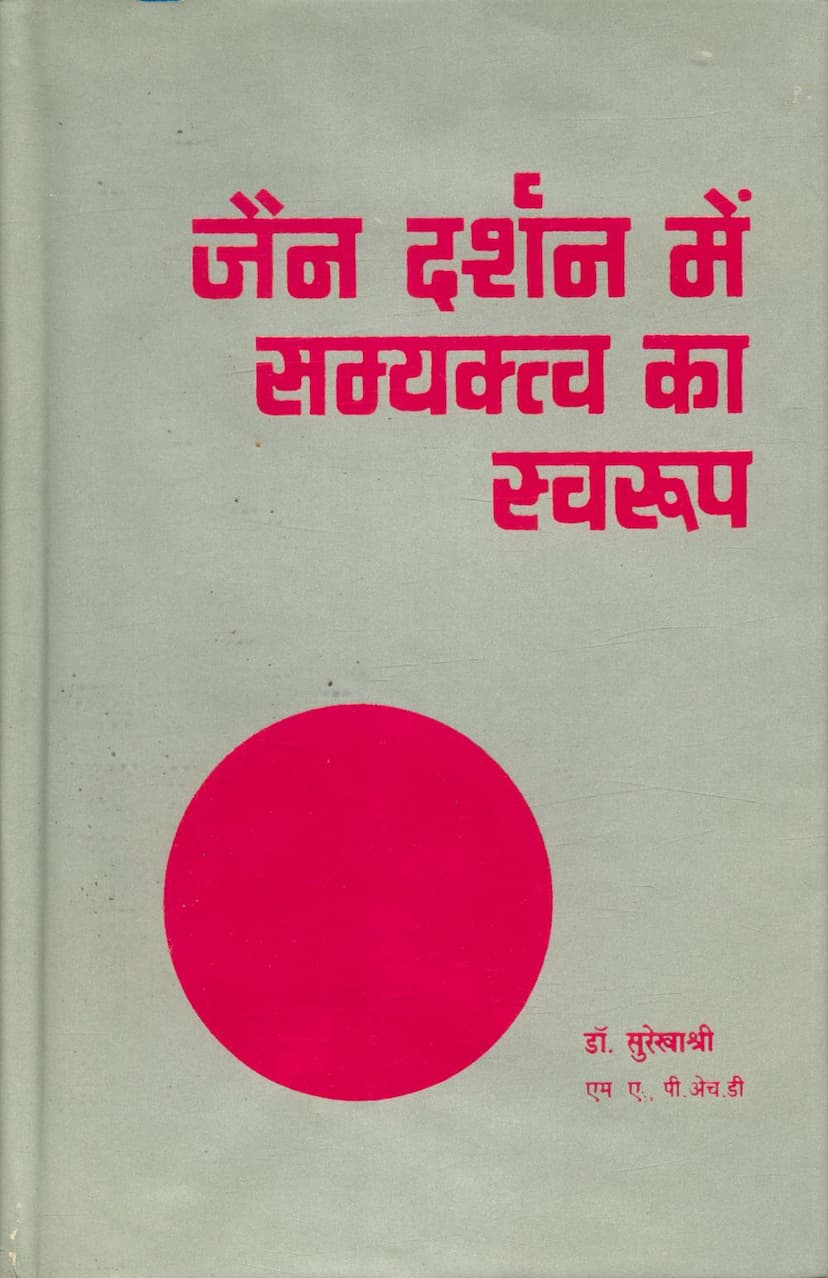Jain Darshan Me Samyaktva Ka Swarup
Added to library: September 1, 2025

Summary
This book, "Jain Darshan mein Samyaktva ka Swarup" (The Nature of Samyaktva in Jain Philosophy) by Sadhvi Dr. Surekhashri, published by Vichakshan Smruti Prakashan in Jaipur, Rajasthan in 1988, is a comprehensive scholarly exploration of the Jain concept of Samyaktva.
Here's a summary of its key aspects:
-
Core Topic: The book delves into the fundamental Jain principle of Samyaktva, which translates to Right Faith, Right Knowledge, and Right Conduct, collectively known as the Ratnatraya (Three Jewels). It is considered the foundational step towards achieving Moksha (liberation) in Jainism.
-
Research Approach: The author, Dr. Surekhashri, has undertaken a thorough and critical study of Samyaktva, drawing from authentic and original research. The reviews highlight the scholarly nature of the work and its potential to be a significant contribution to understanding Jainism.
-
Scope of Study:
- Jain Agamas: The book meticulously traces the concept of Samyaktva through various Jain scriptures, including the early Agamas like Acharanga, Sutrakritanga, Dashavaikalika, Uttaradhyayana, Nishiha, Dashashrutaskandha, Prajnapana, etc.
- Post-Agamic Jain Literature: It examines Samyaktva as discussed in later Jain philosophical works, referencing both Śvetambara and Digambara traditions, including texts by prominent Acharyas like Kundakunda, and later works like Ratnakaranda Shravakachara, Prashnavyakaraṇa, etc.
- Comparative Philosophy: A significant aspect of the research involves a comparative analysis of Samyaktva with concepts in other Indian philosophical schools such as Buddhism, Sankhya, Yoga, Nyaya, Vaisheshika, and Vedanta.
- Non-Indian Religions: The study also extends to examining parallel concepts in Christianity and Islam.
- Other Indian Texts: The book references the Mahabharata, Bhagavad Gita, and Srimad Bhagavatam to understand the broader context of faith and righteousness in Indian thought.
-
Key Themes Explored:
- Evolution of the Concept: The book details the historical development and nuances of Samyaktva within Jainism.
- Meaning and Characteristics: It elaborates on the definition, nature, characteristics, components (angas), and different classifications (bheda-prabheda) of Samyaktva.
- Samyaktva and Muni Life: An early integration of Samyaktva with the life of monks (munis) is highlighted, particularly from the Acharanga Sutra.
- Samyaktva and Lay followers: The study also addresses the applicability and importance of Samyaktva for householders (shravakas).
- Samyaktva and Knowledge: It explores the relationship between Samyaktva and Right Knowledge (Samyagjnana), emphasizing that true knowledge is often seen as dependent on or illuminated by Samyaktva.
- Obstacles to Samyaktva: The book likely discusses factors that hinder the attainment of Samyaktva, such as the influence of Mohaniya Karma (delusion-causing karma) and certain erroneous beliefs.
- Practical Application: Beyond its philosophical depth, the book emphasizes the practical relevance of Samyaktva in daily life, including its impact on ethical values like Ahimsa (non-violence) and the cultivation of a balanced perspective.
-
Author's Contribution: Dr. Surekhashri is lauded for her in-depth study, critical analysis, and presentation of a complex philosophical subject in an accessible manner. Her work is seen as a valuable resource for scholars, researchers, and students of Jain philosophy and Indian thought in general.
In essence, this book is a scholarly endeavor to illuminate the multifaceted concept of Samyaktva, tracing its roots in Jain scriptures and comparing it with similar ideas across various philosophical and religious traditions. It underscores Samyaktva's pivotal role in the Jain path to liberation and its influence on ethical living.